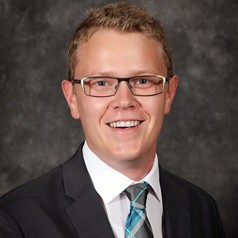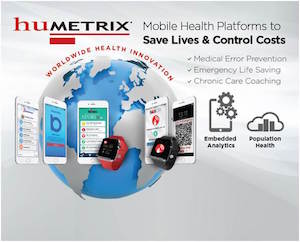 Audacious Inquiry (Ai), an industry leader in connected care, and The Sequoia Project, Inc a non-profit dedicated to solving health IT interoperability for the public good, announced a teaming agreement to support the PULSE initiative and to leverage their combined expertise in support of displaced populations needing medical treatment and ongoing care as part of disaster response efforts. Ai first developed the PULSE concept under contract with the Office of the National Coordinator for Health IT (ONC) in April 2014. In March 2016, the California Emergency Management Services Authority (CalEMSA) contracted with Ai to develop and operate PULSE. PULSE was subsequently activated for use during the California wildfires in October 2017, with the support of The Sequoia Project. The non-profit works to advance the breadth of PULSE by leveraging national networks and by convening a national advisory council of experts.
Audacious Inquiry (Ai), an industry leader in connected care, and The Sequoia Project, Inc a non-profit dedicated to solving health IT interoperability for the public good, announced a teaming agreement to support the PULSE initiative and to leverage their combined expertise in support of displaced populations needing medical treatment and ongoing care as part of disaster response efforts. Ai first developed the PULSE concept under contract with the Office of the National Coordinator for Health IT (ONC) in April 2014. In March 2016, the California Emergency Management Services Authority (CalEMSA) contracted with Ai to develop and operate PULSE. PULSE was subsequently activated for use during the California wildfires in October 2017, with the support of The Sequoia Project. The non-profit works to advance the breadth of PULSE by leveraging national networks and by convening a national advisory council of experts.
disaster response
See the following -
Kaazing Unveils DisasterAWARE ENTERPRISE™ Real Time Risk Intelligence Platform For Businesses Worldwide
 With new records being set each year for natural disaster losses, enterprises face an ever-increasing need to be prepared. For decades, DisasterAWARE has served the needs of top agencies worldwide, including U.S. Department of Defense, Homeland Security FEMA, the United Nations, the Association of Southeast Asian Nations (ASEAN), and a variety of international humanitarian aid organizations. With over 1.7 million users of DisasterAWARE mobile app, Disaster Alert for the public, spanning 115 international organizations, Kaazing is helping to broaden the reach of this critical, life-saving technology to provide businesses with an enterprise-grade solution.
With new records being set each year for natural disaster losses, enterprises face an ever-increasing need to be prepared. For decades, DisasterAWARE has served the needs of top agencies worldwide, including U.S. Department of Defense, Homeland Security FEMA, the United Nations, the Association of Southeast Asian Nations (ASEAN), and a variety of international humanitarian aid organizations. With over 1.7 million users of DisasterAWARE mobile app, Disaster Alert for the public, spanning 115 international organizations, Kaazing is helping to broaden the reach of this critical, life-saving technology to provide businesses with an enterprise-grade solution.
- Login to post comments
Meet 43 Smart People Who Plan To Make Government Work Better
The second round of Presidential innovation fellows will include a NASA veteran, a University of Massachusetts professor who builds software tutoring systems and a former operations manager for Ushahidi... Read More »
- Login to post comments
Who Are They Going To Blame?
Once the dust settles, or the flood water recedes (in this case), someone will conduct a root cause analysis to figure out why the emergency generator at NYU Langone Medical Center failed to operate during Hurricane Sandy when the Con Edison power supply was disrupted. Given that this investigation will involve two sectors of society (politics and health care) most characterized by a need to find someone to blame, some poor person at the hospital will be deemed to be the culprit. Read More »
- Login to post comments
#Sandy’s Lessons For Government Social Media
Genevieve Contey and David Miller gave a presentation Wednesday about their experience managing the National Oceanic and Atmospheric Association’s social media platforms during Hurricane Sandy. Read More »
- Login to post comments
10 Questions For Obama’s Chief Technology Officer
[Todd Park's] role has taken on heightened importance after several recent developments, including the implementation of the new health care law, efforts to reduce the backlog in Department of Veterans Affairs claims processing, and privacy issues raised by disclosures about data collection by the National Security Agency. Read More »
- Login to post comments
3 Health IT Must-Haves For Natural Disaster Preparedness
Responding to disasters is something every healthcare institution needs to be ready for. From hurricanes to snowstorms to wildfires, having a plan in place and technology to back it up is critical to an effective response. Read More »
- Login to post comments
3 Reasons Why the US is Vulnerable to Big Disasters
 During the 2017 disaster season, three severe hurricanes devastated large parts of the U.S. The quick succession of major disasters made it obvious that such large-scale emergencies can be a strain, even in one of the world’s richest countries. As a complex emergency researcher, I investigate why some countries can better withstand and respond to disasters. The factors are many and diverse, but three major ones stand out because they are within the grasp of the federal and local governments: where and how cities grow; how easily households can access critical services during disaster; and the reliability of the supply chains for critical goods. For all three of these factors, the U.S. is heading in the wrong direction. In many ways, Americans are becoming more vulnerable by the day.
During the 2017 disaster season, three severe hurricanes devastated large parts of the U.S. The quick succession of major disasters made it obvious that such large-scale emergencies can be a strain, even in one of the world’s richest countries. As a complex emergency researcher, I investigate why some countries can better withstand and respond to disasters. The factors are many and diverse, but three major ones stand out because they are within the grasp of the federal and local governments: where and how cities grow; how easily households can access critical services during disaster; and the reliability of the supply chains for critical goods. For all three of these factors, the U.S. is heading in the wrong direction. In many ways, Americans are becoming more vulnerable by the day.
- Login to post comments
6 Smartphone Apps To Help Fight Hurricane Sandy's Fury
If you live in the Northeastern United States and are bracing for Hurricane Sandy's wallop, your smartphone can become a handy tool if disaster strikes. Read More »
- Login to post comments
7 Ways Newsrooms Can Boost Citizen Reporting
In my previous post, I argued that established, traditional newsrooms tend to be most comfortable accepting citizen reporting or user-generated content during a large-scale, widespread emergency event... Read More »
- Login to post comments
9 Ways Health IT – Beyond EHRs – Helps Patients
Even among very knowledgeable people, the concept of health information technology is often equated with its most familiar element, “electronic health records.” Adoption of electronic health records are a critical first step to realizing the transformational power of Health IT – but getting out of paper enables even greater HIT capabilities. Read More »
- Login to post comments
Africa: 'Misguided' Nations Lock Up Valuable Geospatial Data
Many governments, particularly those in low-income countries, are "shooting themselves in the foot" by failing to give research and development communities open access to their caches of geospatial data, experts have warned. Read More »
- Login to post comments
Americans Focus On Responding To Earthquake Damage, Not Preventing It, Because They Are Unaware Of Their Risk
 On July 4 and 5, two major earthquakes, followed by several thousand smaller ones, struck Southern California. Their size and the damage they caused captured attention around the country. What tends to get much less notice from the public is what can be done to prevent catastrophic damage from big quakes. Had the epicenter of these latest large California earthquakes been closer to downtown Los Angeles, tens of thousands of apartment buildings could have been damaged or collapsed. Consequently, structural engineers are calling on legislators to prepare for and prevent earthquake damage by crafting new and improved building codes...
On July 4 and 5, two major earthquakes, followed by several thousand smaller ones, struck Southern California. Their size and the damage they caused captured attention around the country. What tends to get much less notice from the public is what can be done to prevent catastrophic damage from big quakes. Had the epicenter of these latest large California earthquakes been closer to downtown Los Angeles, tens of thousands of apartment buildings could have been damaged or collapsed. Consequently, structural engineers are calling on legislators to prepare for and prevent earthquake damage by crafting new and improved building codes...
- Login to post comments
Artificial Intelligence and Human Learning Systems - Key Topic of KIT Science Week 2021
 From October 5 to 10, 2021, the KIT Science Week will celebrate its premiere. Researchers from all over the world, actors from politics and industry, and citizens from Karlsruhe and the region are invited to immerse into the world of artificial intelligence, AI for short. This new type of event of Karlsruhe Institute of Technology (KIT) will offer diverse access to AI and open rooms for discourse. KIT, for its part, will receive impetus for its research agenda.
From October 5 to 10, 2021, the KIT Science Week will celebrate its premiere. Researchers from all over the world, actors from politics and industry, and citizens from Karlsruhe and the region are invited to immerse into the world of artificial intelligence, AI for short. This new type of event of Karlsruhe Institute of Technology (KIT) will offer diverse access to AI and open rooms for discourse. KIT, for its part, will receive impetus for its research agenda.
- Login to post comments
At CES, Humetrix Shows its e-Prescribed Digital Health Technology to Transform Healthcare in the Hands of Consumers
 At CES, Humetrix will demo its suite of mobile health platforms that put consumers around the world in control of their own care. By offering actionable mobile applications that address the complexity of medical care, delivered in multiple settings, and which needs to be personalized, Humetrix places decision-making tools in consumers’ own hands and on their own devices, where they can use it.
At CES, Humetrix will demo its suite of mobile health platforms that put consumers around the world in control of their own care. By offering actionable mobile applications that address the complexity of medical care, delivered in multiple settings, and which needs to be personalized, Humetrix places decision-making tools in consumers’ own hands and on their own devices, where they can use it.
- Login to post comments
Audacious Inquiry and The Sequoia Project Announce National Partnership to Support States in Disaster Response Through the Patient Unified Lookup System for Emergencies (PULSE)
- Login to post comments